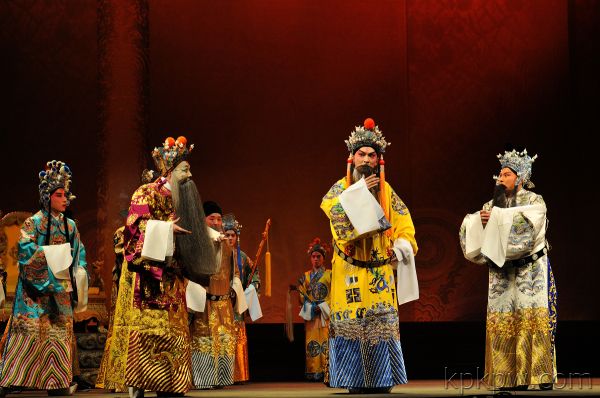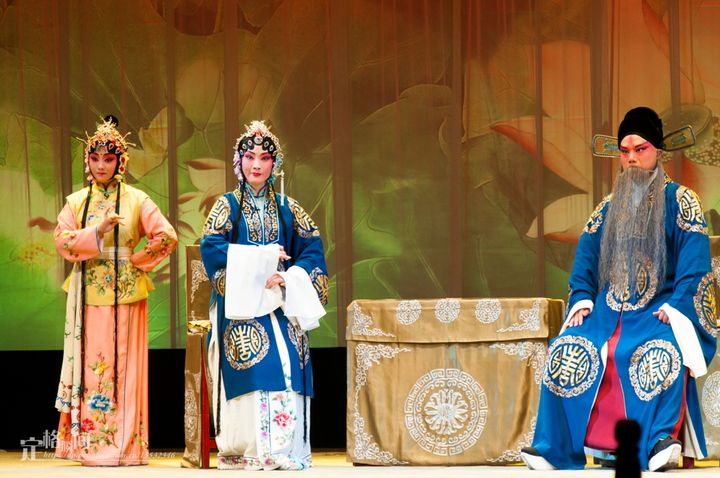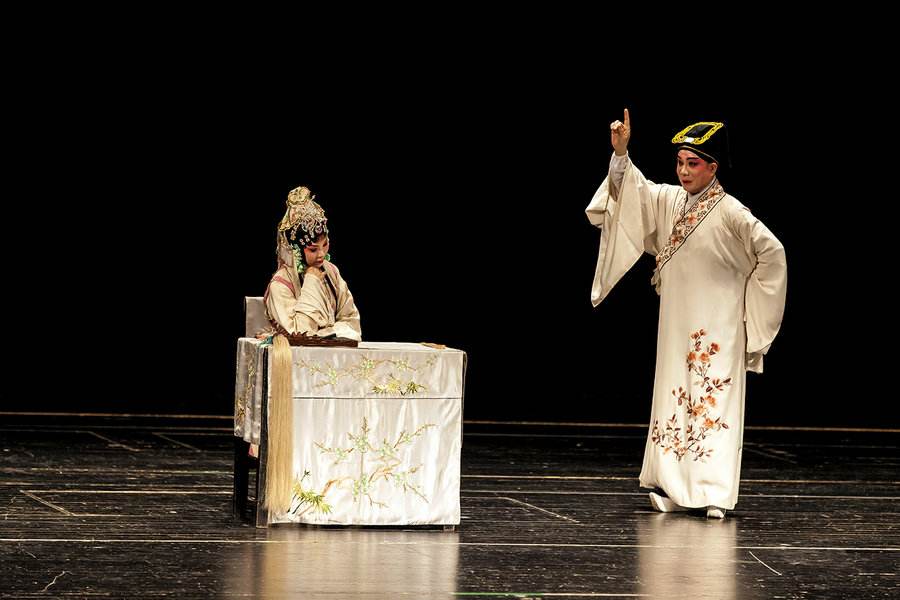Imagery and Symbolism
3 min readWestern opera attempts to reproduce the real world on stage. Kunqu opera, on the other hand, uses stylized performing techniques to convey the essence of the material and spiritual world. From acting to makeup, costumes, and stagecraft, every aspect of Kunqu is fraught with imagery and symbolism.
Kunqu opera Lianhuan Ji: Ci Fu(Strategies of a Beauty: Killing the Father), performance still Kunqu performers do not mechanistically reproduce the actions of life on stage. Rather, they refine and abstract these actions to create a unique artistic lexicon.A character’s changing emotions arere-vealed through facial expression, gesture, and movement, as well as the use of costumes and props. For instance,a local official’s daughter portrays her shyness by hiding her mouth with her fan;a general expresses his rage by biting the pheasant plumes on his helmet. An elder depicts fright by wiggling his false whiskers back and forth;a scholar shows happiness by flipping his long sleeves. The passage of time is also portrayed by stylized motions. An army troupe circling the stage several times may in-dicate that they have traveled several thousand kilometers.A serving maid taking several brisk quick steps on the flat stage indicates that she has climbed a flight of stairs.A scholar reclines in a chair and shuts his eyes for several seconds, and an entire night has passed. All of these movements are a type of dance, closely coordinated with the rhythm of the music. On the relatively empty Kunqu stage, they serve as a unique and richly symbolic language that brings deep meaning to the Kunqu performance.

Kunqu makeup and costumes also have distinctive symbolic significance. The characters’ social status, age, and temperament may all be expressed through facial makeup. The color of facial makeup is particularly important. Red symbolizes loyalty, black symbolizes courage, and white symbolizes treachery. These colors, along with various patterns, are used to differentiate different characters.

Long eyebrows and a red face symbolize the valor and righteousness of the Chinese military folk hero Guan Yu(c.163-219 AD). Downturned eyes and a black face symbolize the tragic nature of Xiang Yu(232-202 BC), the King of Chu, as he approaches his final defeat.A white mouse-shaped spot on the nose and short eyebrows symbolize the crafty nature of the thief and murderer Lou Ashu.
Cart banner in Kunqu opera Tiao Hua Che(The Rolling Cart)
Most Kunqu opera costumes are based on actual clothing that was adapted according the requirementsof the stage. The python robe is the ceremonial court costume worn by the emperor and ministers. The top is embroidered with the dragon, the sacred and ancient symbol of China, symbolizing veneration for the office. The black robes worn by impoverished scholars are decorated with bits of cloth repre-senting patches, indicating the hardship of their lives. The robes worn by Taoist priests are decorated with the Eight Trigrams of traditional Chinese philosophy, representing Heaven, Earth, Mountain, Lake, Wind, Thunder, Water, and Fire. This costume indicates the knowledge and scholarship of the wearer.
Kunqu opera is also characterized by the imagery and symbolism of its stage sets and props. The Kunqu stage is highly abstract. Often the object being represented is nowhere to be seen. For instance,a horse whip is sufficient to indicate the presence of a horse; a boat is represented by a stylized oar;a cart is represented by a banner with the picture of a wheel; and an opulent imperial palace is implied by the presence of several imperial guards. Beds, mountains, bridges, and city walls can all be represented by a table.

Kunqu performance techniques and stagecraft work together to create an integrated symbolic system.
Only when their significance is grasped can Kunqu be fully deciphered.








